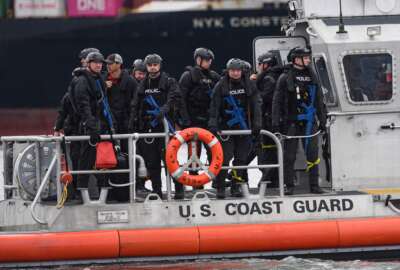OPM takes ‘lessons-learned’ approach on new snow policy
Dean Hunter, the deputy director of facilities, security and contracting at OPM, said the new emergency dismissal policy has earned plaudits from state and loca...
wfedstaff | June 4, 2015 3:06 pm
By Jack Moore
Federal News Radio
@jmooreWFED
The new emergency dismissal policy from the Office of Personnel Management gives OPM — and all agencies — more flexibility in responding to bad weather this winter, and even in situations like this summer’s earthquake.
The new policy includes a tier of new options, included staggered departure times and the addition of a “shelter-in-place” option. Under this scenario, OPM would require agencies to keep employees at work if they didn’t leave earlier.
Dean Hunter, the deputy director of facilities, security and contracting at OPM, said the new policy has earned plaudits from state and local emergency officials.
“I think the feedback we’re getting is pretty positive,” Hunter, who joined In Depth with Francis Rose, said, citing complimentary testimony from local officials in Maryland, Virginia and Washington, D.C.
Lessons-learned approach
OPM takes a lessons-learned approach for updating nearly every policy, Hunter said. For example, following 2010’s “Snowmaggeddon” blizzards, OPM broadened its unscheduled-telework policies.
And Hunter said the more recent snowstorm last January served as a “catalyst” for the new changes. During that storm, OPM released federal workers two hours early, leading to gridlock on roadways and hours-long commutes, especially for employees who waited to leave.
The shelter-in-place option, which would go into effect only after a “final departure time,” would allow transportation and public-safety officials to more easily to clear roads because more federal workers would hunker down at the office instead of heading out on the roads.
For agency managers and human resources officials, whom employees will likely turn to in coming days for more information about the new policies, Hunter said individual agencies should do a better job of informing employees about dismissal options and telework.
Social media components of new plan
“Social media is … one of multiple platforms that we use at OPM,” Hunter said, citing Facebook and Twitter. Once a decision about the federal government operating status has been made — which typically happens late at night or early the next morning — OPM updates its website, notifies the media and, increasingly in a Web 2.0 world, disseminates the message via social media.
Social media offers benefits by being able to get the message to the public out quickly, Hunter said, and then the public can share that official information with others.
RELATED STORIES:
OPM rolls out changes to snow policy
DC-area officials cheer federal ‘shelter-in-place’ snow strategy
Copyright © 2024 Federal News Network. All rights reserved. This website is not intended for users located within the European Economic Area.





